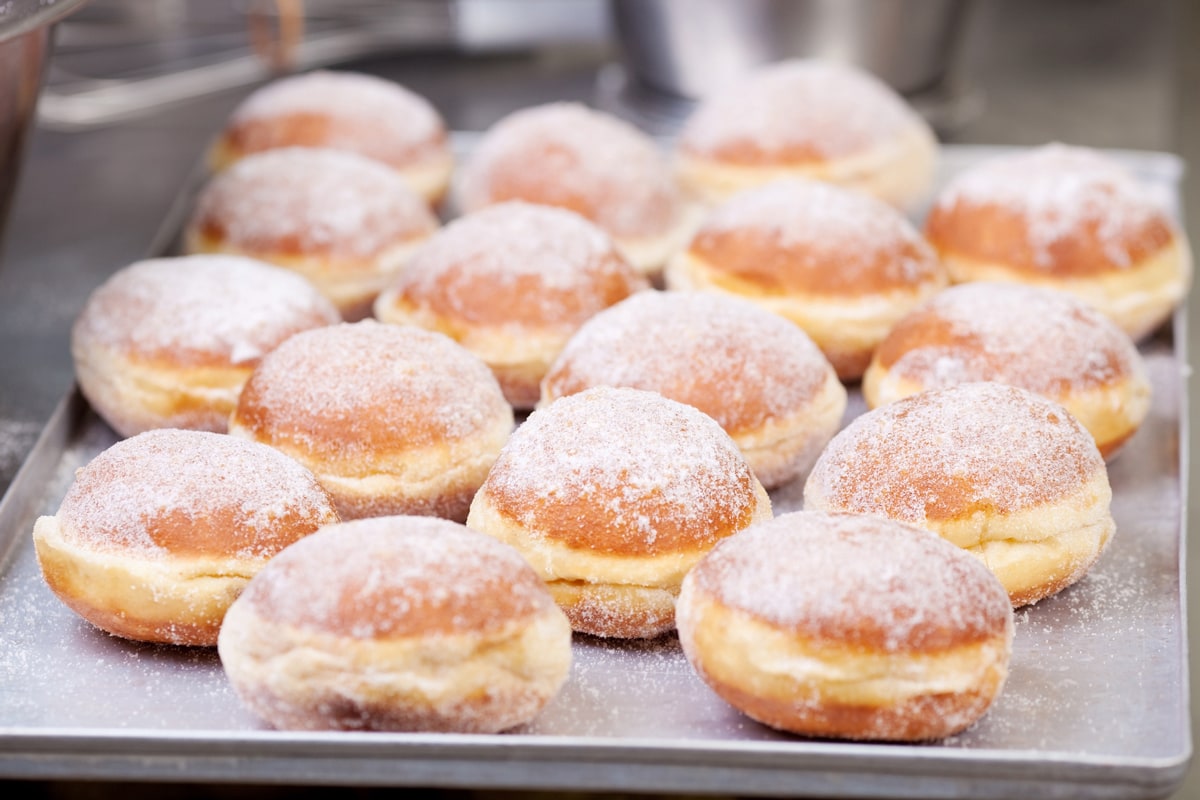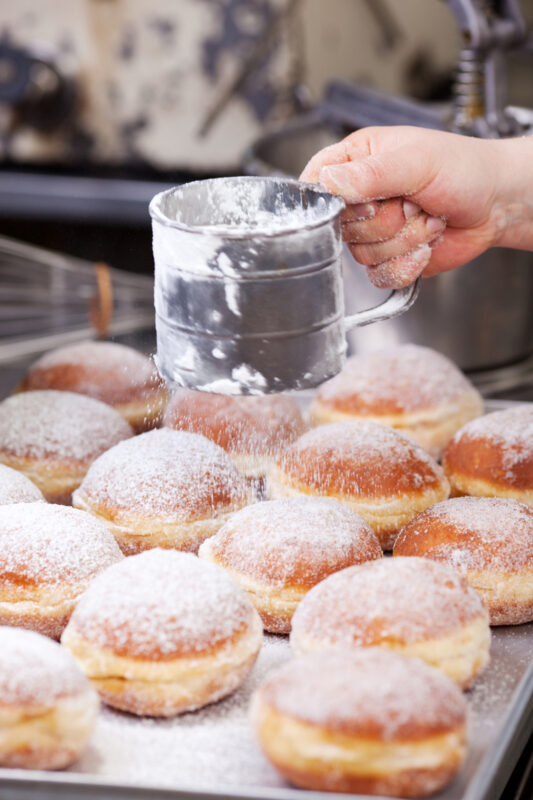Krapfen, also called bomboloni, are Italian doughnuts (sometimes spelled donuts!) from Alto Adige with origins that go back hundreds of years. There are many different hypotheses about who invented krapfen, but the most popular seems to be either a baker in Berlin, which would explain the German name “Berliner” for these doughnuts, or a pastry chef from Vienna named Krapf, after which the krapfen are said to be named. Either way, these scrumptious jelly or cream filled bomboloni are a sugary treat you can make at home following this step-by-step recipe.

As you probably know, the typical American doughnut has a hole in the middle, but the jelly doughnut is an exception to this rule and instead of a hole they are filled with jelly (of course!). In fact, the jelly donuts you find in a baker’s dozen in the United States are very similar to the jelly filled bomboloni from Alto Adige.
The original krapfen recipe from Alto Adige calls for an apricot jam filling, but other popular fillings include different flavors of jams and jellies as well as a cream, chocolate or nutella filling.
Although the names krapfen and kirchtagskrapfen are very similar, the first is the round filled doughnut recipe you will find below while the second is a square-shaped fried pastry, from the same region, filled with poppy or chestnut jam and sprinkled with powdered sugar.

When making bomboloni, the crucial ingredients are:
The easiest way to make the krapfen dough is with a stand mixer, like a kitchenaid, to ensure the ingredients are thoroughly mixed together and to save your arms from having to knead the dough. Other than that, no special equipment is needed!
All over Italy, the main filling you will find in bomboloni is pastry cream (crema pasticciera in Italian), which can be vanilla or lemon cream or chocolate flavored. To make pastry cream, you just need egg yolks, sugar, flour, milk and a dash of either vanilla or lemon rind zest. The ingredients get slowly mixed together and then heated until just boiling and then the cream is left to cool before using it to fill your krapfen doughnuts. Other fillings you can find in Italy are all kinds of jams and jellies and nutella.


You can store doughnuts for a day or two, but we highly recommend eating them fresh, as they are meant to be served slightly warm. If you do want to store them, they can be put in the fridge in an airtight container for up to two days. Let them come up to room temperature before eating or microwave following the instructions below.
1. Place the krapfen on a microwave-safe plate.
2. Reheat it in the microwave on medium heat for approximately 20 seconds.
3. Remove and let cool for a few seconds.
4. Sprinkle fresh powdered sugar on top and enjoy.
Originally krapfen doughnuts were made only at carnival, the celebration before lent begins and were the typical treat to consume on Fat Tuesday. However, now it is possible to find bomboloni at any time of the year all over Italy.
If you let your pastry cream get too hot while cooking or cook it too long, the end result can be an eggy tasting pastry cream or one that is rubbery. Be sure not to overheat the mixture or cook it for too long so your pastry cream is just the right flavor and texture.